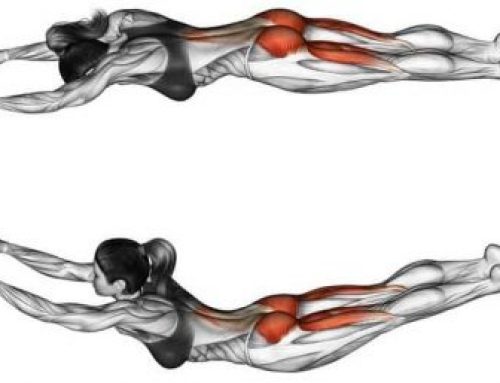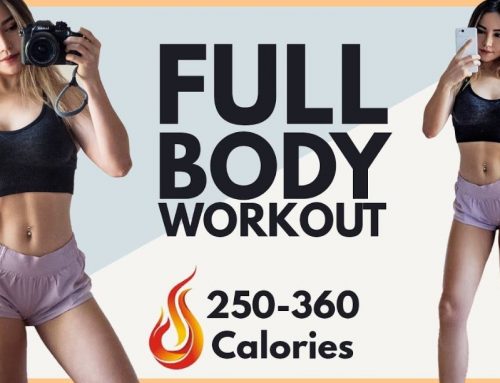
Strong abdominal muscles play a crucial role in overall physical health. The core, which includes the abs, is the foundation of the body’s stability and balance. By strengthening these muscles, individuals can significantly improve their posture, reducing the likelihood of experiencing back pain and other discomforts associated with poor alignment. A robust core supports the spine and pelvis, ensuring that movements are performed with greater efficiency and less strain on the body.
Moreover, a strong core is essential for injury prevention. Whether engaging in daily activities or participating in sports, having well-developed abdominal muscles can help protect against strains and injuries. This is because a stable core allows for better control and coordination, enabling the body to handle unexpected movements and stresses more effectively.
The benefits of strong abs extend beyond functional and health aspects. For many, a toned midsection is a key fitness goal. Achieving this aesthetic is often associated with a sense of accomplishment and confidence, influencing overall well-being and self-esteem. A defined abdominal area is not only visually appealing but also a testament to one’s dedication to fitness and a healthy lifestyle.
In conclusion, prioritizing ab workouts is essential for those seeking to enhance their physical health, improve posture, and achieve a balanced and stable body. The combination of functional and aesthetic benefits makes strengthening the core a vital aspect of any comprehensive fitness regimen.
Understanding the Core: Beyond Just Abs
When discussing core workouts, it is essential to understand that the term “core” encompasses far more than just the visible abdominal muscles. The core is a complex network of muscles, each playing a crucial role in maintaining stability and strength throughout the body. The most commonly recognized muscle within the core is the rectus abdominis, often referred to as the “six-pack.” However, this is merely a part of the comprehensive core muscle group.
The transverse abdominis lies beneath the rectus abdominis and acts as a stabilizing girdle, providing support to the spine and internal organs. This muscle is pivotal in maintaining internal pressure and balance, ensuring that movements are performed with precision and control. Alongside the transverse abdominis are the obliques, which include the internal and external obliques. These muscles flank the rectus abdominis on either side and are responsible for rotational movements and lateral stability, allowing for twisting and bending motions.
Furthermore, core strength is significantly influenced by the lower back muscles, particularly the erector spinae. These muscles extend along the spine and are crucial for maintaining an upright posture and supporting the spine during various movements. Additionally, the multifidus muscle, located deeper within the back, contributes to spinal stability and coordination.
The interconnectedness of these muscles ensures that the core functions as a cohesive unit. When one muscle group is activated, it often recruits others to assist, creating a dynamic and supportive network. This synergy is vital for performing everyday activities and athletic endeavors, as a strong core enhances overall body mechanics, reduces the risk of injury, and improves balance and coordination.
Understanding the comprehensive nature of the core underscores the importance of incorporating exercises that target all these muscles. By doing so, one can achieve a well-rounded and effective core workout, leading to a stronger and more resilient body.
Benefits of Ab Workouts for Everyone
Incorporating ab workouts into your fitness routine offers a myriad of benefits for individuals of all fitness levels. These exercises are not solely for those aiming to sculpt a six-pack; they provide a foundation for enhancing overall physical health and performance. Engaging in ab workouts can significantly improve core strength, which is crucial for maintaining stability and balance in various activities and sports.
One of the primary advantages of ab workouts is the enhancement of athletic performance. A strong core is essential for athletes as it aids in generating power, improving agility, and increasing endurance. Whether you’re a runner, swimmer, or weightlifter, a robust core can boost your efficiency and effectiveness in your chosen sport. Additionally, a well-conditioned midsection can help prevent injuries by providing better support and reducing the strain on other muscles and joints.
Beyond athletic applications, ab workouts are invaluable in supporting daily activities. Tasks such as lifting heavy objects, bending, or even standing for extended periods become less strenuous with a strong core. Everyday movements like these require the engagement of the abdominal muscles, and regular ab exercises can make these actions easier and more manageable.
Another significant benefit of ab workouts is the prevention of lower back pain. A strong core provides better support for the spine, alleviating pressure on the lower back. This support can be particularly beneficial for individuals who spend long hours sitting at a desk or standing, as it helps maintain proper posture and reduces the risk of back-related issues.
It’s also important to address the common misconception that ab workouts are only for those seeking a six-pack. While visible abdominal muscles can be a goal for some, the underlying benefits of core exercises extend far beyond aesthetics. Building a strong core is essential for overall health, functionality, and well-being, making ab workouts a valuable component of any fitness regimen.
Starting Point: Assessing Your Current Fitness Level
Before embarking on an ab workout routine, it is crucial to assess your current fitness level. This initial evaluation will help you tailor your workouts to your needs and ensure that you progress safely and effectively. To begin, consider the following methods to gauge your core strength and flexibility.
First, a simple plank test can provide insight into your core strength. Assume a plank position, keeping your body straight and your forearms on the ground. Try to hold this position for as long as possible. If you can maintain the plank for more than a minute, you likely have a good foundation of core strength. If not, don’t worry; this just means you have room for improvement, and starting slow will be beneficial.
Another method to assess your flexibility is the sit-and-reach test. Sit on the floor with your legs extended straight in front of you. Slowly reach forward towards your toes. This test will gauge the flexibility of your lower back and hamstrings, which are essential components of a balanced core. If you struggle to reach your toes, incorporating flexibility exercises into your routine will be advantageous.
For those who are new to exercising or have been inactive for a while, it is particularly important to start slowly. Gradually increasing the intensity and duration of your workouts will help prevent injury and ensure that you do not become discouraged. Begin with basic exercises such as crunches, leg raises, and modified planks. As your core strength and flexibility improve, you can introduce more challenging routines.
In conclusion, accurately assessing your current fitness level is a vital first step in any ab workout routine. By understanding your core strength and flexibility, you can create a customized plan that suits your abilities and promotes steady progress. Remember, starting slow and being consistent are key factors in achieving your fitness goals.
Basic Ab Workouts for Beginners
Embarking on a journey to strengthen your core is a commendable decision, and starting with basic ab workouts can set a solid foundation. These exercises are designed to be beginner-friendly, allowing you to perform them at home or in the gym with minimal equipment. Below, we outline some essential ab exercises, accompanied by detailed instructions and tips to ensure you maintain proper form.
Crunches: Crunches are a staple in ab workouts. To perform a crunch, lie on your back with your knees bent and feet flat on the floor. Place your hands behind your head, but avoid pulling on your neck. Engage your core and lift your shoulders off the ground, squeezing your abdominal muscles at the top of the movement. Slowly lower back to the starting position and repeat. Aim for three sets of 15-20 repetitions.
Planks: Planks are excellent for building core stability. Begin in a forearm plank position with your elbows directly beneath your shoulders and your body forming a straight line from head to heels. Engage your core, glutes, and legs to maintain this position. Hold the plank for 20-30 seconds, gradually increasing the duration as you build strength. Perform three sets.
Leg Raises: Leg raises target the lower abs. Start by lying on your back with your legs extended and hands placed under your hips for support. Keeping your legs straight, lift them until they form a 90-degree angle with your torso. Slowly lower your legs back down without letting them touch the floor. Complete three sets of 10-15 repetitions.
When performing these exercises, focus on maintaining proper form to maximize effectiveness and minimize the risk of injury. For crunches and leg raises, ensure your lower back remains in contact with the floor to avoid strain. During planks, avoid letting your hips sag or rise too high. Consistency and attention to detail in your form will contribute significantly to your progress in strengthening your core.
Intermediate to Advanced Ab Workouts
Once you have established a solid foundation of core strength, it’s time to elevate your routine with intermediate to advanced ab workouts. These exercises are designed to challenge your muscles more intensely, promoting further strength and development. Incorporating movements such as bicycle crunches, hanging leg raises, and ab rollouts can significantly enhance your core stability and overall fitness.
Bicycle crunches are an effective exercise that targets the rectus abdominis and obliques. To perform this exercise, lie on your back with your hands behind your head. Lift your legs off the ground and bend your knees at a 90-degree angle. Simultaneously, bring your right elbow towards your left knee while extending your right leg. Alternate sides in a pedaling motion, ensuring you maintain a controlled pace and proper form throughout.
Hanging leg raises are another advanced exercise that engages the lower abs intensely. Begin by hanging from a pull-up bar with a shoulder-width grip. Keeping your legs straight, raise them until they are parallel to the ground. For an added challenge, continue lifting your legs until your toes touch the bar. This exercise not only strengthens your core but also improves grip strength and stability.
Ab rollouts, using an ab wheel or barbell, push your core to its limits. Start on your knees, gripping the ab wheel handles or barbell. Roll forward slowly, extending your body while keeping your core tight and back straight. Roll out as far as you can while maintaining control, then pull back to the starting position. This movement demands significant core engagement, making it an excellent choice for advanced ab training.
To progressively increase the intensity of your workouts, consider adding more repetitions, incorporating resistance bands, or performing these exercises on an unstable surface like a balance ball. This variation will continuously challenge your muscles, ensuring consistent progress and preventing plateaus. By integrating these intermediate to advanced ab workouts into your routine, you can achieve a stronger, more resilient core.
Incorporating Ab Workouts into Your Routine
Integrating ab workouts into your regular fitness routine can significantly enhance your core strength and overall physical health. To effectively incorporate these exercises, it’s crucial to establish a balanced approach that includes a mix of different workout types. Ab workouts should ideally be performed three to four times a week, allowing for adequate recovery time between sessions. This frequency ensures that your core muscles are consistently engaged without being overworked.
Each ab workout session should last between 15 to 20 minutes, focusing on a variety of exercises that target different parts of the abdominal region. Planks, sit-ups, and leg raises are excellent choices to include in your routine. These exercises not only strengthen your core but also enhance stability and posture.
Combining ab workouts with other forms of exercise, such as cardio and strength training, is essential for a well-rounded fitness regimen. Cardio activities like running, cycling, or swimming help burn fat, which can reveal the toned muscles underneath. Moreover, incorporating strength training exercises, such as squats, deadlifts, and bench presses, can further engage your core muscles while building overall body strength.
Consistency is key when it comes to achieving noticeable results from your ab workouts. Maintaining a regular workout schedule and gradually increasing the intensity of your exercises will lead to significant improvements over time. However, it’s equally important to prioritize recovery. Adequate rest, proper nutrition, and staying hydrated are crucial components of any fitness routine. Allowing your muscles to recover helps prevent injuries and ensures sustained progress.
By effectively integrating ab workouts into your routine and balancing them with cardio and strength training, you can achieve a strong, stable core and enhanced overall fitness. Remember, the journey to a stronger you begins with a well-structured and consistent workout plan.
Tips for Staying Motivated and Avoiding Common Pitfalls
Staying motivated with an ab workout regimen can be challenging, especially when confronted with common obstacles like boredom, plateaus, and time constraints. However, with the right strategies, you can maintain enthusiasm and continue progressing toward your fitness goals.
One effective way to stay motivated is to set realistic and achievable goals. Start by defining what you want to accomplish with your ab workouts, whether it’s improving core strength, achieving a more defined midsection, or enhancing overall fitness. Break these goals into smaller, manageable milestones. Celebrating these small victories can provide a sense of accomplishment and keep you motivated to push forward.
Tracking your progress is another essential strategy. Keep a workout journal or use a fitness app to record your exercises, sets, and repetitions. Documenting your progress allows you to see tangible improvements over time, which can be incredibly motivating. Additionally, having a visual record of your achievements can help you identify patterns and make necessary adjustments to your routine.
Variety is key to preventing boredom and avoiding plateaus. Incorporate different exercises into your ab workouts to keep them engaging and challenging. For instance, mix traditional crunches with planks, bicycle crunches, and leg raises. This not only keeps your workouts interesting but also ensures that you are targeting various muscle groups within your core. Experiment with different workout formats, such as circuit training or high-intensity interval training (HIIT), to add diversity to your routine.
Time management is another common challenge. If you find it difficult to allocate a specific time for ab workouts, try incorporating them into your daily activities. Perform a quick set of exercises during breaks at work or while watching TV. Short, frequent workouts can be just as effective as longer sessions.
Lastly, consider finding a workout buddy or joining a fitness community. Having someone to share your fitness journey with can provide mutual encouragement and accountability, making it easier to stay committed to your ab workout regimen.
About the author : Tricep
We valued your need and thought . Main aim is to keep you fit with our suggestion and help let have a lifestyle
Latest videos
The Vital Role of Exercise in Maintaining Our Health
Understanding Exercise and Its Impact on HealthExercise is a cornerstone of a healthy lifestyle, often regarded as a vital factor in promoting overall health and well-being. Engaging in regular physical activity not only enriches the [...]
The Role of Triceps in Bench Press: Maximize Your Gains
```html Understanding the Bench Press and Its Muscle Groups The bench press is a compound exercise, revered in the strength training community for its ability to enhance upper body power and muscle development. At its [...]
Join our mailing list today
Insider offers & flash sales in your inbox every week.
Curabitur non nulla sit amet nisl tempus convallis quis ac lectus dolor sit amet, consectetur adipiscing elit sed porttitor lectus.











